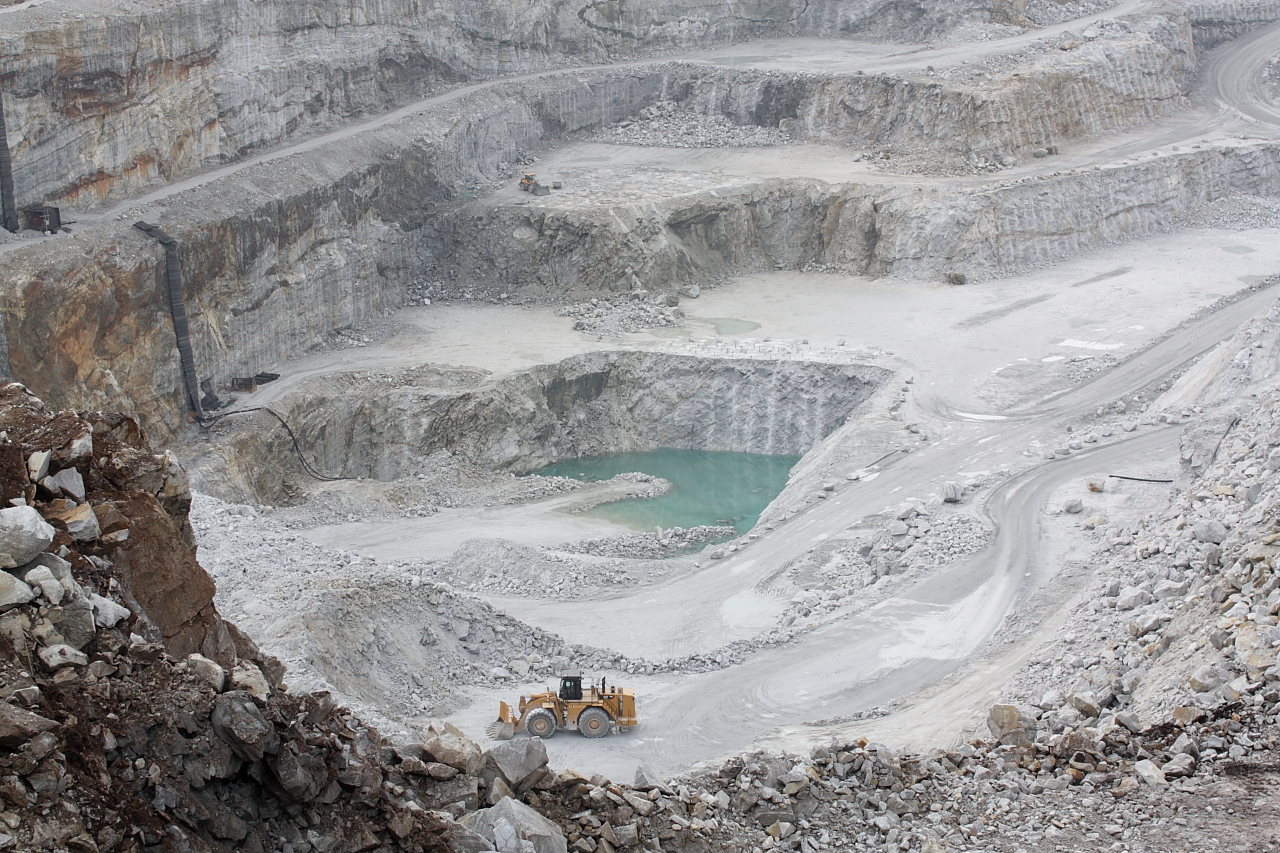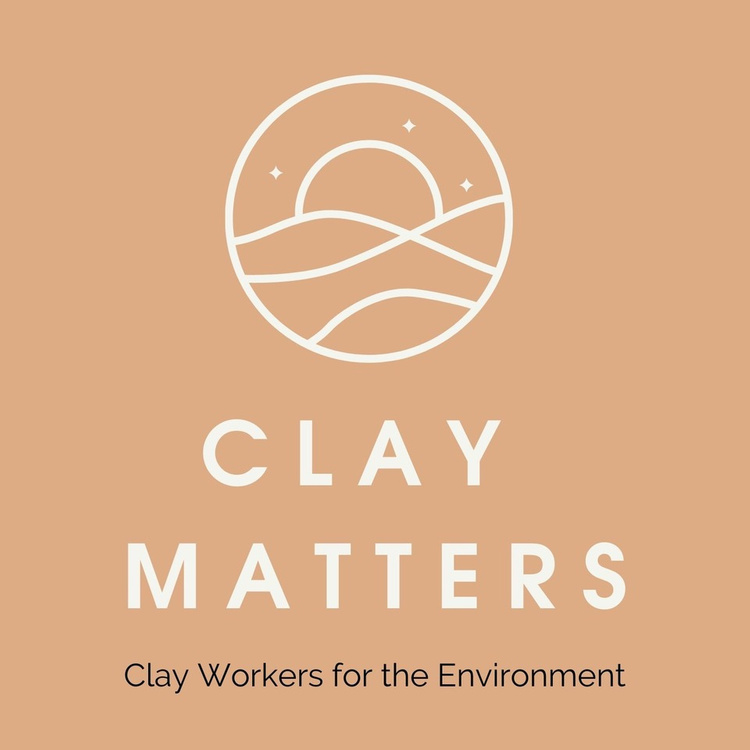Whiting
General Information:
Chemical formula: CaCO3
Other names: Calcium Carbonate
Sources:
- Omya10 (Australia)
- Crecer (Argentina)
- Kalkspat Bodmer 512 (Switzerland)
- Snowcal 40 (England)
- Vicron 2511 (United States)
Common forms: Found as minerals calcite and aragonite, in chalk, limestone, eggshells, gastropod shells, shellfish skeletons, and pearls
Ceramic Substitutes: wollastonite, frits, food waste shells
Whiting is the main source of calcium (alkaline earth flux) for glazes, it helps produce hard glazes and matts in excess. It is a fine grind of chalk (aragonite - marine shell deposits).
The purest sources are in England, France, and Belgium. China is the world's largest producer of calcium carbonate, followed by the United States and various European countries. India, Japan, and Russia are also significant producers of calcium carbonate.
Limestone, which is the primary source of calcium carbonate, is mined extensively around the world, with major mining sites located in countries like the United States, Australia, and others.
Other sources include marble, calcite ores, and sea shells. Whiting and limestone are not necessarily the same thing; limestone may contain considerable amounts of magnesium (i.e. dolomite) and some suppliers do not distinguish, be sure to ask.
Add byproduct vs primary product info. Whiting is generally inexpensive and there is a large calcium carbonate industry worldwide for non-ceramic uses of this mineral.
The purest sources are in England, France, and Belgium. China is the world's largest producer of calcium carbonate, followed by the United States and various European countries. India, Japan, and Russia are also significant producers of calcium carbonate.
Limestone, which is the primary source of calcium carbonate, is mined extensively around the world, with major mining sites located in countries like the United States, Australia, and others.
Other sources include marble, calcite ores, and sea shells. Whiting and limestone are not necessarily the same thing; limestone may contain considerable amounts of magnesium (i.e. dolomite) and some suppliers do not distinguish, be sure to ask.
Add byproduct vs primary product info. Whiting is generally inexpensive and there is a large calcium carbonate industry worldwide for non-ceramic uses of this mineral.

How it’s processed:
The mineral beneficiation processes used in the production of calcium carbonate [in Australia] involve various stages to extract and refine the mineral. These processes include:
According to the search results the precipitation step, where the calcium hydroxide slurry is carbonated to produce calcium carbonate, is the most critical and complex part of the overall calcium carbonate processing.
The precipitated calcium carbonate (PCC) production process begins with quicklime (CaO). The quicklime is mixed with water to form a calcium hydroxide slurry (Ca(OH)2) in an exothermal chemical reaction known as slaking. This slurry is then cooled and transported to a mix tank, where CO2 is added. This carbonates the calcium hydroxide slurry to produce calcium carbonate.
The final step in the PCC production process is to screen the calcium carbonate to remove any off-spec particle sizes. Screen sizes can be as fine as 325 mesh (44μm). The final screened product is then stored in a holding tank until needed.
The end result of this precipitation process is a calcium carbonate product that can be controlled for particle size, surface area, particle shape, and surface chemistry to meet customer specifications. PCC is also whiter and brighter than most naturally occurring calcium carbonate.
- Crushing and Grinding: The calcite ore is crushed into smaller particles and ground into fine powder using crushers and grinding mills
- Flotation: Calcite ores typically contain impurities like metal sulphide, silicate, or other minerals, which are removed through the froth-flotation process using collectors like amines and xanthate collectors
- Calcination: In the manufacturing process of calcium carbonate powder, limestone is heated in a kiln at around 1000°C to produce quicklime (calcium oxide) and carbon dioxide gas
- Slaking and Carbonation: The quicklime is mixed with water to create slaked lime (calcium hydroxide), which is then reacted with carbon dioxide gas to produce calcium carbonate powder
According to the search results the precipitation step, where the calcium hydroxide slurry is carbonated to produce calcium carbonate, is the most critical and complex part of the overall calcium carbonate processing.
The precipitated calcium carbonate (PCC) production process begins with quicklime (CaO). The quicklime is mixed with water to form a calcium hydroxide slurry (Ca(OH)2) in an exothermal chemical reaction known as slaking. This slurry is then cooled and transported to a mix tank, where CO2 is added. This carbonates the calcium hydroxide slurry to produce calcium carbonate.
The final step in the PCC production process is to screen the calcium carbonate to remove any off-spec particle sizes. Screen sizes can be as fine as 325 mesh (44μm). The final screened product is then stored in a holding tank until needed.
The end result of this precipitation process is a calcium carbonate product that can be controlled for particle size, surface area, particle shape, and surface chemistry to meet customer specifications. PCC is also whiter and brighter than most naturally occurring calcium carbonate.
Permaculture Ethics
Earth Care
The mining and processing of calcium carbonate can have various environmental impacts:
Overall, while calcium carbonate plays essential roles in various industries, its mining and processing can have environmental implications such as waste generation, alteration of soil properties, and impacts on aquatic ecosystems. Efforts to mitigate these impacts include exploring mineral carbonation for CO2 sequestration and sustainable mining practices to minimize environmental harm.
- Mining Waste: Mining waste can generate acidic or alkaline leachate with high concentrations of metals and metalloids, posing a risk to the environment 1.
-
Carbon Sequestration: Mineral carbonation, a process that involves the reaction of CO2 with minerals like calcium carbonate, can help reduce CO2 emissions associated with industrial activities like aluminum production5.
-
Soil Properties: Calcium carbonate influences soil properties and is a significant terrestrial carbon store, impacting soil health and ecosystem dynamics2.
-
Water Treatment: Calcium carbonate is used in water treatment processes, which can affect aquatic ecosystems depending on the concentration and disposal methods of the byproducts3.
-
Coastal Sediments: Biological production of calcium carbonate in oceans contributes to coastal sediments through the breakdown of calcareous organisms, influencing coastal erosion and sediment dynamics4.
Overall, while calcium carbonate plays essential roles in various industries, its mining and processing can have environmental implications such as waste generation, alteration of soil properties, and impacts on aquatic ecosystems. Efforts to mitigate these impacts include exploring mineral carbonation for CO2 sequestration and sustainable mining practices to minimize environmental harm.
People Care
There appear to be some potential human rights and workers' rights issues associated with the calcium carbonate industry:
Overall, the search results suggest that the large-scale mining and extraction of calcium carbonate, as well as its use in carbon offset schemes and concentration in certain developing regions, may be linked to human rights, land rights, and workers' rights issues in the calcium carbonate industry. More transparency and stronger safeguards appear to be needed to address these concerns.134
- The first search result discusses concerns about the carbon markets system, which can allow polluters to offset their emissions by buying carbon credits from projects involving Indigenous Peoples' lands. This suggests that the exploitation of calcium carbonate resources on Indigenous lands may be linked to violations of their land rights and lack of free, prior and informed consent.1
- The search results indicate that much of the calcium carbonate used in industry is exploited from mines and quarries.3 This reliance on mining operations raises concerns about potential labor rights issues, such as poor working conditions, low wages, or the use of child labor in some regions, particularly in developing countries.34
- The search results mention that the exploitation of calcium carbonate for plastic industry applications is concentrated in countries like China, Vietnam, and Malaysia.34 This geographic concentration may indicate a lack of robust labor protections and environmental regulations in these areas, which could lead to exploitation of workers and communities.34
Overall, the search results suggest that the large-scale mining and extraction of calcium carbonate, as well as its use in carbon offset schemes and concentration in certain developing regions, may be linked to human rights, land rights, and workers' rights issues in the calcium carbonate industry. More transparency and stronger safeguards appear to be needed to address these concerns.134
Other Uses for Whiting:
- Construction industry - Used as a building material, limestone aggregate for road building, an ingredient in cement, and as the starting material for preparing builders' lime.
- Iron and steel production - Added to blast furnaces to help purify iron ore by forming a slag with impurities.
- Medical and Pharmaceutical Uses - Used as an inert filler for tablets, in toothpaste, as a calcium supplement, antacid, and phosphate binder, as well as a food preservative.
- Agricultural Uses - Used as a soil conditioner, calcium fertilizer, and livestock feed additive to improve pH, provide essential nutrients, and promote animal health.
- Oil industry - Added to drilling fluids as a weighting material and to help seal the borehole.
FOOTNOTES
- https://www.perplexity.ai/search/what-are-non-aRr6Tp3sTtepvzaPOZ598Q
- https://digitalfire.com/material/calcium+carbonate
- https://glazy.org/materials/15457
- https://fillplas.com/calcium-carbonate-caco3-and-industrial-applications/
- https://tankymineral.com.vn/whiting-calcium-carbonate-in-ceramic-342569
- https://www.mnclay.com/AddToCart2.aspx?ProductGroup=CALCAW
